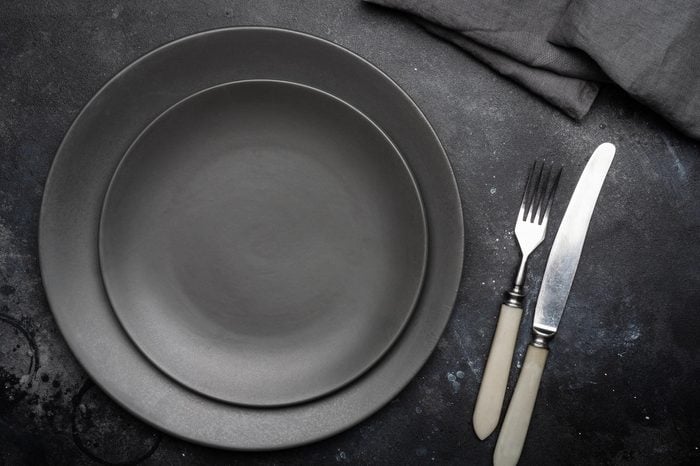
Are you getting enough iron?
Extreme fatigue, a rapid heartbeat, shortness of breath, and difficulty focusing sound like symptoms that would send most people running to their doctor’s office. But they can also be signs of a very common mineral deficiency—the most common nutritional disorder in the world, according to the World Health Organization.
“Iron carries oxygen through our blood to our muscles and brain, making it crucial for both mental and physical health and performance,” says dietitian Brigitte Zeitlin, RD, owner of BZ Nutrition. The mineral is also essential for helping maintain a healthy immune system, regulating body temperature, and digestion and absorption of other nutrients—which explains why a lack of it, known as iron-deficiency anemia, can lead to the symptoms described above.
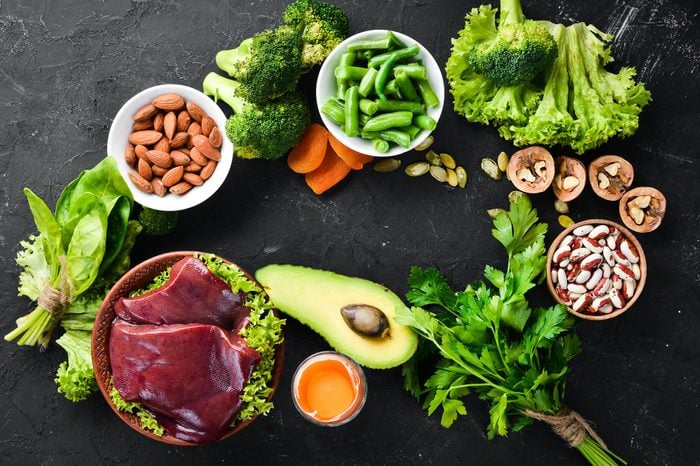
Pumping up your iron intake
We have to get iron from outside sources like foods and/or supplements, says Bonnie Taub-Dix, RDN. And that might sound easy until you consider that a cup of raw spinach—despite what Popeye cartoons might lead you to believe—has less than 1 milligram per cup. Government nutrition experts recommend that adult men get a minimum of 8 mg daily, and adult pre-menopausal women, thanks to menstrual cycles, need 18 mg a day; pregnant women need 27 mg.
Some of the top dietary sources of iron come from animals—red meat, liver, shellfish—so the growing popularity of plant-based diets have left us more iron-starved than ever. Read on for your ultimate iron rich food grocery list, and other tips for keeping your levels of this vital mineral at healthy levels.
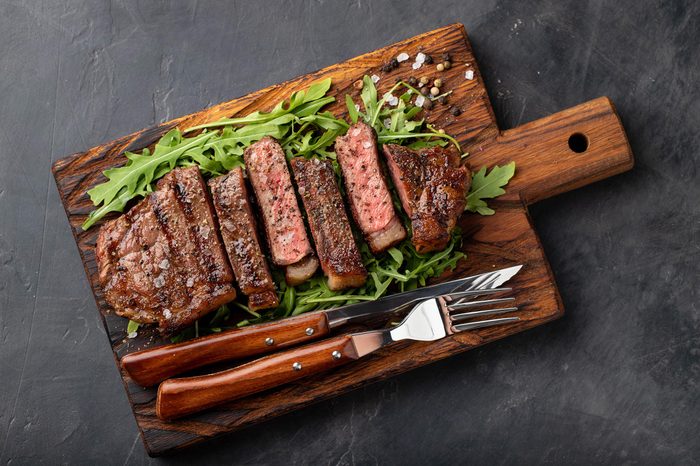
Beef
Most people think of red meat when they think of iron, and with good reason. A 4-oz beef patty has nearly 3 mg of iron, as well as vitamin B-12, zinc, and selenium, says Taub-Dix. And though red meat gets a bad rap when it comes to fat, many cuts are fairly lean, including sirloin and top and bottom roast.
Find out the 14 foods everyone over 50 should be eating.
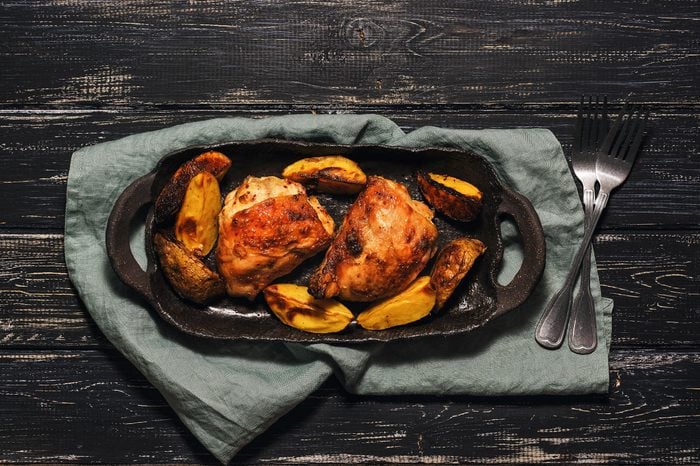
Chicken thighs
Poultry has half as much iron as beef, but you can still get 1.3 mg in a 4-oz serving. And more importantly, it’s the type of iron that’s most easily absorbed by your body (heme iron), compared to the kind you get from plant-based sources (non-heme), says Taub-Dix. If you want to maximize your intake of the mineral, opt for dark meat, such as thighs, which will have a little bit more iron than white meat, like breasts.
Here’s why you should never wash chicken before cooking it.
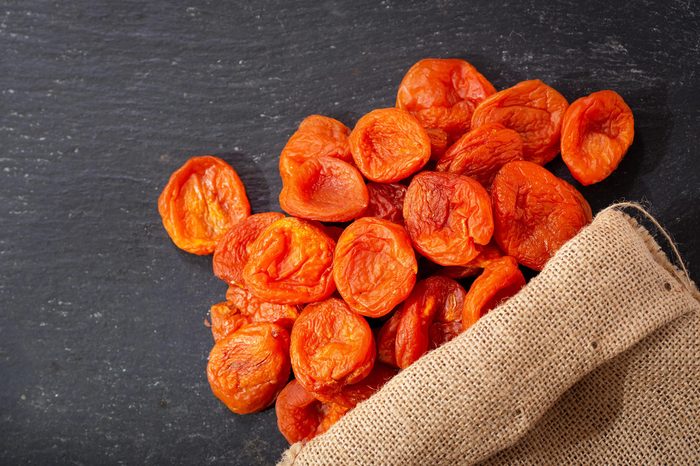
Dried apricots
Half a cup of this iron rich food delivers nearly 2 mg of the muscle-building mineral, for just under 160 calories. This can be a great way for vegetarians to help meet their iron needs, says Taub-Dix, especially since apricots also contain a decent amount of vitamin C, which helps the body absorb iron.
Brush up on the 13 essential vitamins your body needs to stay healthy.
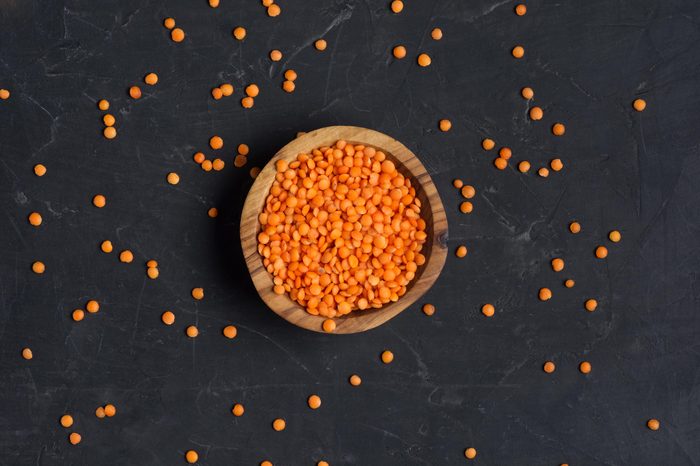
Lentils
As far as vegetarian sources of iron go, members of the pulse family rank near the top. Cooked lentils have more than 3 mg per half cup, and are a great source of protein, too. Plus, says Zeitlin, their high fibre content helps promote gut health, which in turn promotes absorption of all the minerals we get from food, including iron.
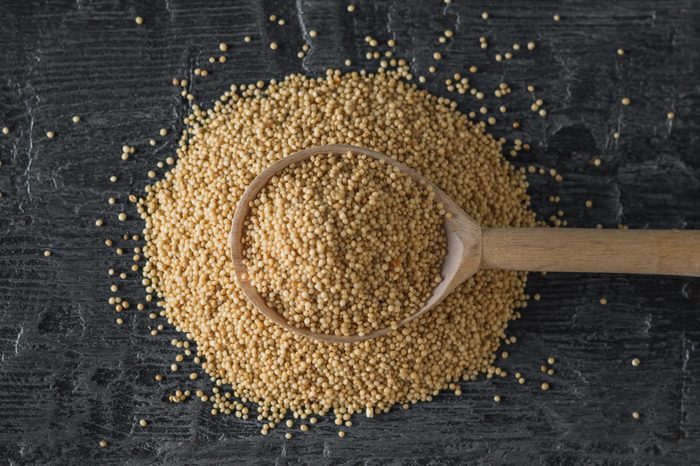
Amaranth
Whole grains are often a good source of minerals, and amaranth is no exception. In addition to be an iron rich food—5 mg per cooked cup—it contains magnesium, calcium, phosphorus and potassium. It comes in many forms, from flour to flakes, is naturally gluten-free, and can even be popped for a crunchy salad topper or snack.
Don’t miss our ultimate guide to healthy grocery shopping.
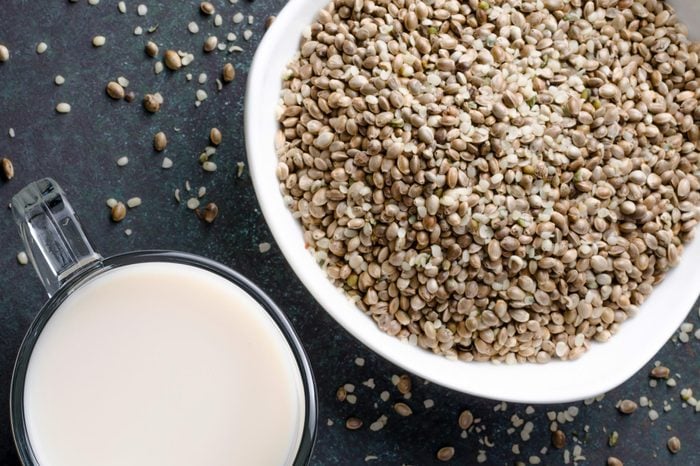
Hemp hearts
These shelled edible seeds of the hemp plant (a relative of marijuana that doesn’t have psychoactive effects) are another iron rich food option for vegans—they give you 2 mg in a quarter-cup. You can eat these sprinkled over a salad, smoothie, or cereal, enabling you to easily boost the iron content of every meal, along with getting more healthy fats (including omega-6s and omega-3s). They are calorie-dense, but they also pack protein, fibre and all nine essential amino acids.
Here are 12 high fibre foods worth adding to your cart.
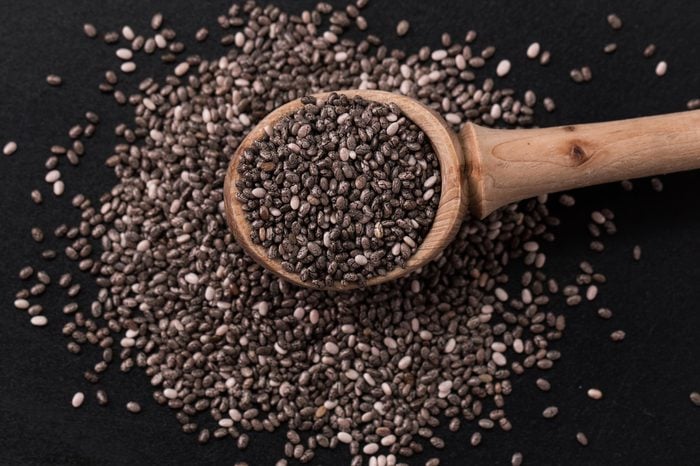
Chia seeds
Though often championed for their omega-3 fats, these tiny seeds pack quite a bit of iron: 2 mg in a quarter-cup. They deliver fibre, protein and other valuable minerals like calcium, magnesium and phosphorus. They’ll also absorb moisture so mixing them with liquid will give you a pudding-like consistency for a healthy, iron-filled dessert or snack.
Check out the cooking mistakes that are making your food unhealthy.
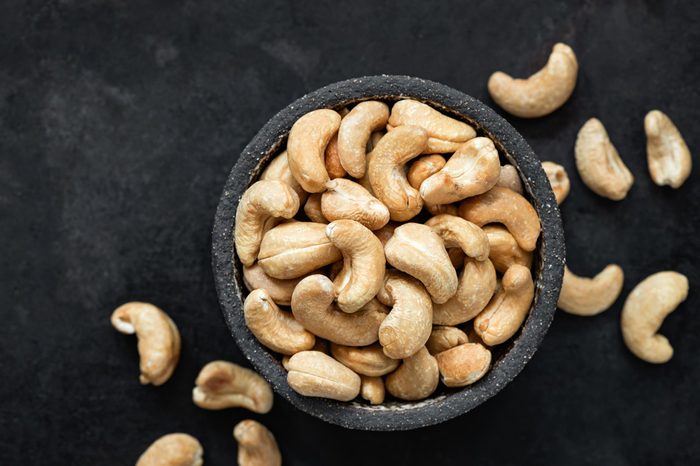
Cashews
Nuts, in general, are full of good-for-you fats and a decent amount of protein; cashews—in addition to being the first nut picked out of trail mix—have the distinction of being highest in iron, with 2 mg per quarter-cup. Toss back a handful as a snack or try blending them into cashew butter for a creamy, protein-rich spread.
Learn to spot the signs you’re not getting enough protein.
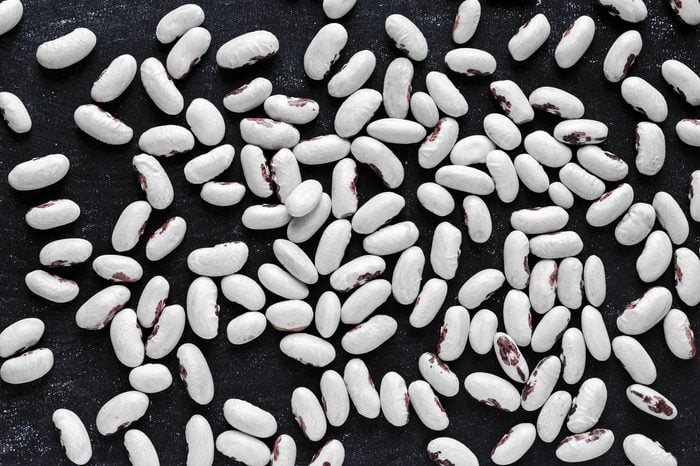
Beans
North Americans don’t eat enough legumes: Beans have fibre and folate (a B vitamin) galore. Depending on the specific variety, you’ll get anywhere from 2 to 4 mg of iron per half cup. White beans rank near the top; garbanzos and black beans are about average.
Here’s why it’s important that you’re getting enough iron.
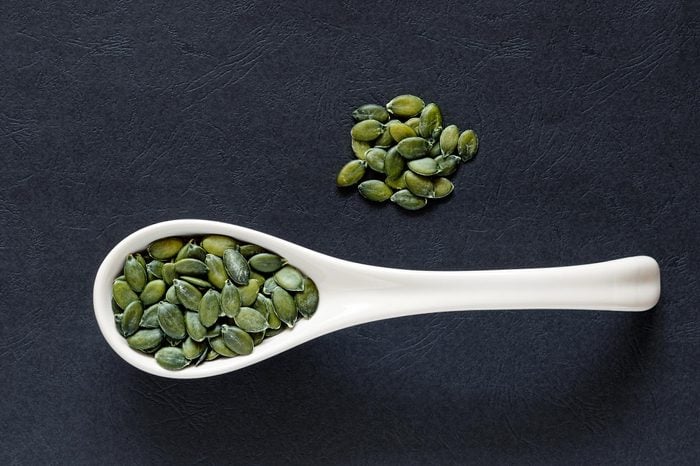
Pepitas
The seed with the most iron is technically sesame, but it’s tough to eat enough of them. Pumpkin seeds (also known as pepitas), however, make a great snack, are full of calcium, protein and zinc and a quarter cup has 4.5 mg of iron.
Learn how to read nutrition labels like a pro.
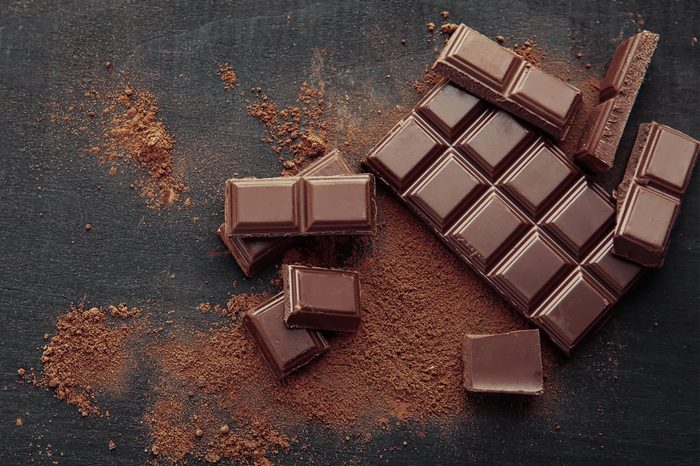
Dark chocolate
Surprised? Cocoa comes from a bean, and like other beans, it’s fairly high in iron. An ounce of the dark stuff (look for a cacao percentage around 60 or 70) contains more than 3 mg. Just don’t overdo it—the calories add up quickly.
Find out 14 more “bad” foods you should stop demonizing.
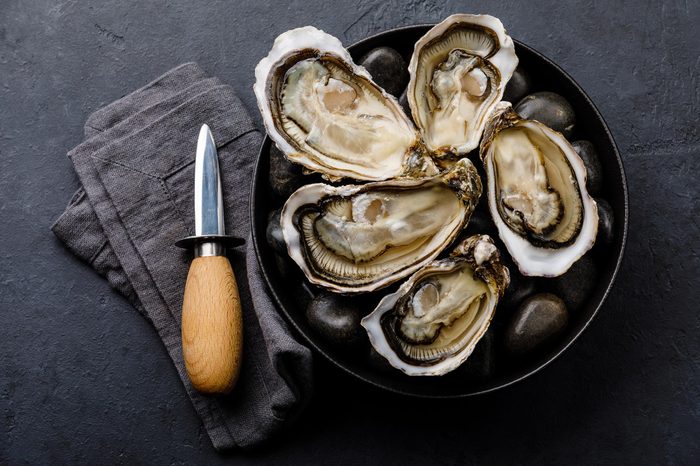
Oysters
There are plenty of great reasons to eat shellfish: They’re rich in protein, low in calories, and a great source of omega-3 fatty acids. And most pack plenty of iron, too, says Taub-Dix. Three ounces of raw oysters deliver 4.5 mg of the mineral, plus you get zinc, which is good for your immune system and may offer men a fertility boost since it aids in the production of testosterone.
Here are more sexual health tips your urologist wants you to know.
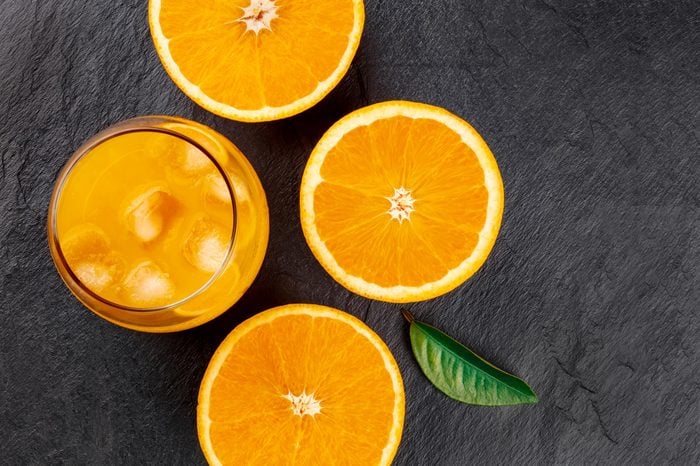
How to get the most from these iron rich foods
Even if you’re bulking up your diet with these iron rich foods, you could be falling short of your recommended daily amount if you don’t take into account how the rest of your diet can interfere with iron. Certain foods inhibit iron absorption, points out Zeitlin, including the tannins in tea, phosphates in carbonated beverages and caffeine. (Here’s how to tell if you’re drinking too much coffee.) Cutting back on those foods will increase the amount of the mineral your body can use.
Likewise, some nutrients boost your body’s ability to absorb iron, says Taub-Dix. Vitamin C, in particular, helps you get more from plant-based sources of iron, which can be useful for people who avoid meat. Pairing C-rich foods such as 100 percent orange juice, bell pepper, or strawberries with iron-rich plant foods can help boost your stores of this all-important mineral.
Now that you’re familiar with these iron rich foods, find out the healthiest fish you can eat.